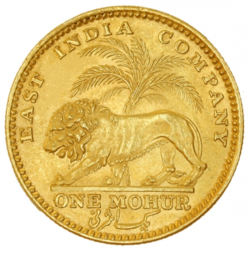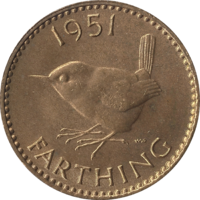Banknotes
As there are a lot of currencies in the world, I decided to only focus my research on the uk as this was the currency I was going to redesign.
| ||||||||||||||||||||||||||||||||||||||||||||||||||||||||||||||||||||||||||||||||||||||||||||||||||||||||||||||||||||||||||||||||||||||||||||||||||||||||||||||||||||||||||||||||||||||||||||||||||||||||||||||||||||||||||||||||||||||||||
Sterling banknotes are the banknotes of the United Kingdom and British Islands, denominated in pounds sterling (GBP).
 All our bank notes bear HM The Queen's head on one side and a famous historical person on the other side. All our bank notes bear HM The Queen's head on one side and a famous historical person on the other side.Queen Elizabeth ll is the first monarch to have her portrait printed on a bank note. It was first done in 1960 as a way of helping to prevent forgeries.
£50 (50 pounds)
The current £50 note features Sir John Houblon, the first Governor of the Bank of England.
Actual note size: 156mm x 85mm (approx.)
The slang term for a British Pound is Quid. One pound sterling is referred to as "A QUID", five pound sterling as "Five Quid" and ten pound sterling as "Ten Quid".
Other names for a pound coin include a smacker, or smackeroon.
The two Banknotes with other names are the "Fiver" (£5) or the "Tenner" (£10) .
For example "It only cost me a tenner"
New 20 pound note
£20 Note (Adam Smith) - Security Features 
Pound sterling
The pound sterling (GBP; £ or ₤) is the official currency used in the United Kingdom. It is also used in British overseas territories, Isle of Man, Bailiwicks of Guernsey and Jersey. The pound is divided into 100 pence.
Today's coins are 1 penny, 2 pence, 5 pence, 10 pence, 20 pence, 50 pence, £1 and £2. The notes are £5, £10, £20 and £50.
Etymology
A pound coin originally weighed one troy pound of sterling silver, giving the currency the name "pound sterling". "Sterling silver" means mixed metal that has 92.5% or more real silver. One pound sterling was originally divided by 240 sterling pence. This was because there are 240 pennyweights in a troy pound. So a single one–pound coin weighed one troy pound and a single 1–penny coin weighed one pennyweight.
The Latin word for "pound" is libra. The £ or ₤ is a stylised writing of the letter L, a short way of writing libra. This is similar to how a pound of mass is abbreviated "lb". Up until around the 1970s, especially on typewriters or keyboards without a "£" symbol, it was common to write "L" instead of "£".
The symbol for pennies is p (pronounced "pee" like the letter). The British write 50p or £0.50 and say it "fifty pee".
The old system
The pound has only been divided into 100 pence since 1971. Before this time it was divided into 20 shillings. Each shilling was divided into 12 pennies.
The symbols for shilling and penny came from Roman coins: "s" for shilling (from the Latin word solidus) and "d" for penny (from the Latin denarius). The penny was divided into 4 farthings. The farthing became obsolete (was no longer used) in 1961 because it was worth so little.
Coins just before the change in 1971 were: 1/2d (ha'penny), 1d (one penny), 3d (threepence; the coin was called a "thrup'ny bit"); 6d (sixpence); 1s (one shilling, also called one "bob"); 2s (a florin); 2s6d (half a crown; the crown, 5s (a quarter of a pound sterling), was not used in modern times).
How prices were written and pronounced in the old system:
There was also a guinea. Originally the guinea was a gold coin. Although the coin had not been minted or circulated for a long time, prices were still sometimes given in guineas. A guinea was 21s (or £1 1s 0d). A price of 58 guineas was, in fact, £60 18s 0d, which sounds more than "58 guineas".
Coins
(Following the Great Recoinage of 1816)
Notes
(Following the Great Coinage of 1816)
Decimalisation
In circulation before 1971 were the halfpenny, penny, threepence, sixpence, shilling, florin, crown, sovereign, ten shilling note, and the one, five, 10, 20 and 50 pound notes.
The crown and sovereign were legal currency before 1971. By then they were commemorative coins and not commonly found in circulation. They are both still legal currency at a value of 25 pence and £1 respectively.
In 1971, the pound sterling of the United Kingdom and the Irish Pound of Ireland were decimalised (divided into 100). Most coins were de-monetised. £1 was equal to 100 pence after then. One shilling became 5 pence, remaining 1⁄20 of £1. £1 stayed the same.
Decimal currency
| ||||||||||||||||||||||||||||||||||||||||||||||||||||||||||||||||||||||||||||||||||||||||||||||||||||||||||||||||||||||||||||||||||||||||||||||||||||||||||||||||||||||||||||||||||||||||||||||||||||||||||||||||||||||||||||||||||||||||||
Wednesday, 2 March 2016
Studio Brief 01 - Licence To Print Money - Research
Labels:
OUGD505,
Studio Brief 01
Subscribe to:
Post Comments (Atom)






 Feel of the paper
Feel of the paper Raised print
Raised print Metallic thread
Metallic thread  Watermark
Watermark  Print Quality
Print Quality  Microlettering
Microlettering 

 See-through register
See-through register 




No comments:
Post a Comment